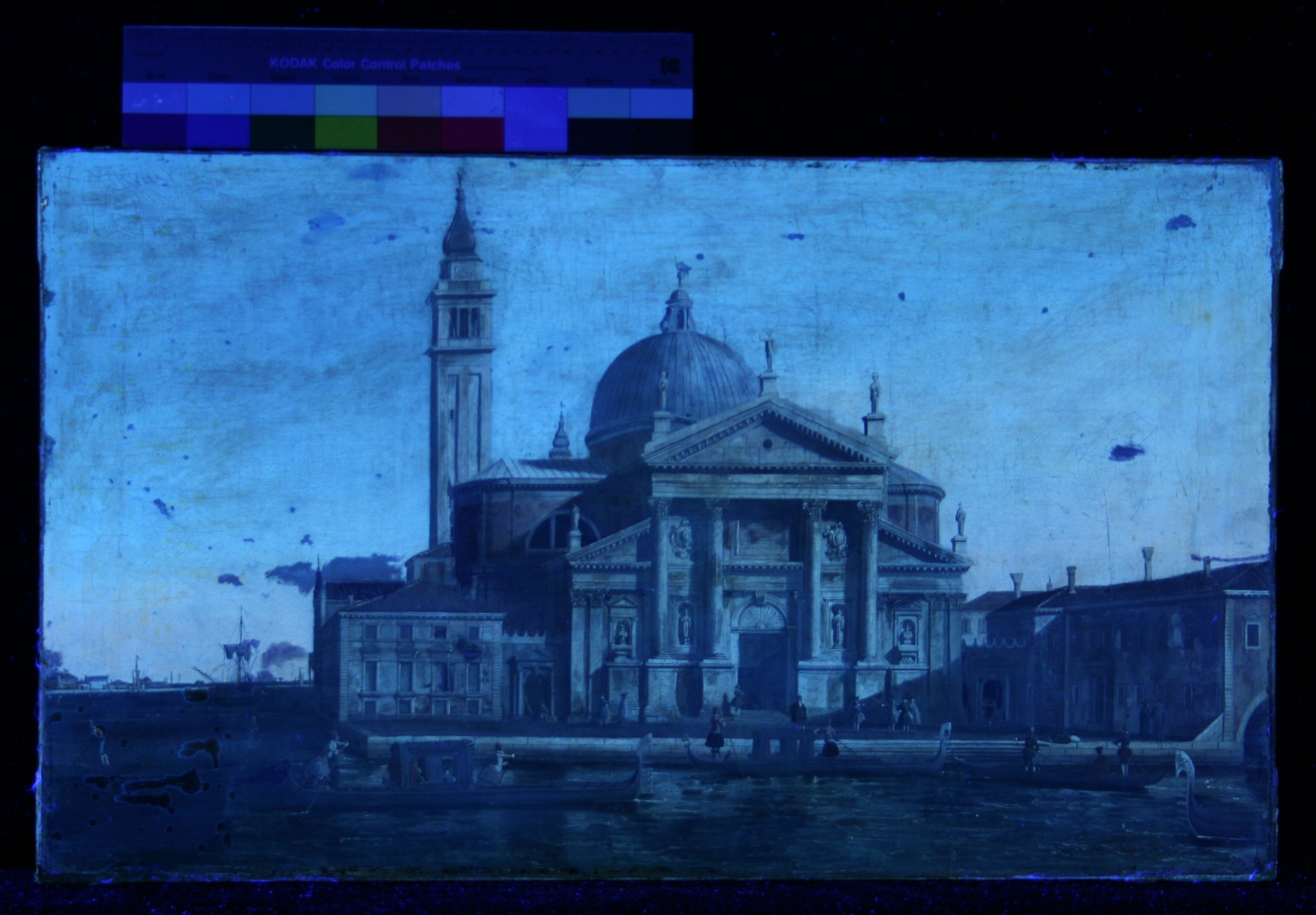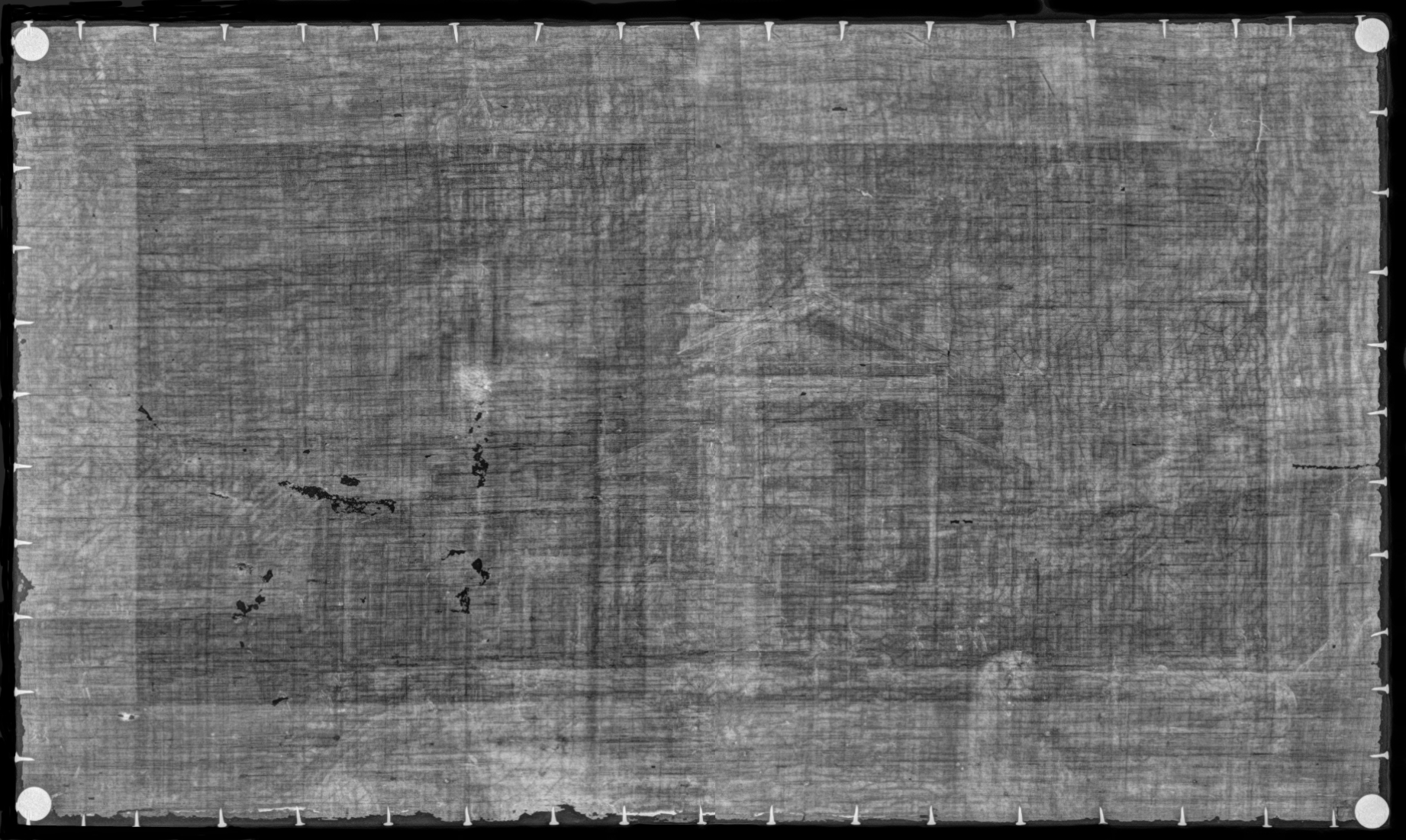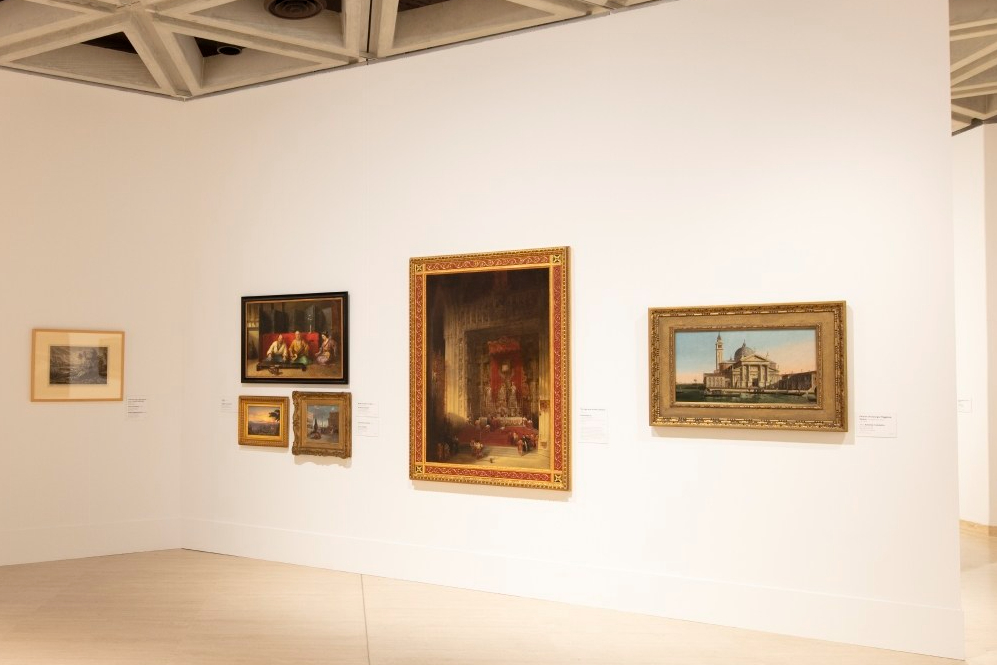
In 2012, conservation of a historical work from the State Collection led to an unexpected discovery. Whilst treating Church of S Giorgio Maggiore, Venice, AGWA’s Painting Conservator, Dr Maria Kubik, was able to fully analyse the painting for the first time since it was acquired in 1908. This process uncovered a striking layer beneath the painting’s surface.
The painting itself depicts San Giorgio Maggiore, a 16th century Benedictine church on the islands of Venice. Designed by Andrea Palladio in the classical renaissance style, the church has been a popular subject for many well-known artists, including JMW Turner, Claude Monet and Arthur Streeton. Though the artist of this particular painting is unknown, its composition is the same as a view of this church by Canaletto, the renowned landscape painter of Venice.

Initial investigation of this work began by thoroughly documenting its condition and examining the painting under different light sources. This is one of the first analytical techniques available to the conservator and involves the use of different wavelengths to gather information about the various layers present. Visible light is used to document the painting before treatment. This inspection highlighted the discoloured retouchings present in the work, as well as a slightly darkened and soiled varnish layer. Ultraviolet (UV) light causes aged varnish layers to fluoresce, and can detect any missing areas as well as later overpaint. In this case, purple patches in the sky revealed the extent of previous restorations.

Following these discoveries, Infrared Reflectography (IRR) was undertaken. IRR is a similar process to UV analysis, but penetrates below the paint surface and requires a special camera to capture the reflected details. An Indium-Gallium-Arsenide (InGaAs) detector within a camera array is attached to a laptop for live capture. This technology is able to detect the presence of carbon beneath paint layers and can thus make underlying images visible.

In this case, beneath the Venetian landscape, the outline of a face could be seen below the left-hand side of the church. To get higher resolution details of the whole painting, it was decided that the work be taken off-site to X-ray facilities at Royal Perth Hospital radiology department where a surprise awaited.

The X-rays reveal a portrait, cropped just over chest height. Though unconfirmed, the underlying image closely resembles the portrait and parrot, as well as their relative positions, in Girl in Green Dress with Parrot by an unknown artist (1725 – 1735) in the York Museums Trust collection.

Using this additional information, the painting could be suitably cleaned and restored to its former appearance, and is now available for viewing in the Art Gallery of WA’s Historical display. Next time you visit, see if you too can find the lady and her parrot hiding in the church!
“Although it’s not the only one in our collection, it’s always exciting to discover overpainted artworks, particularly as complete and extensively reworked as this one.” Maria Kubik


What a thrill! I visited this very church in November last year, just before the storms and floods hit Venice, which is to me the most beautiful place in the world! It is like a second home.
LikeLiked by 1 person